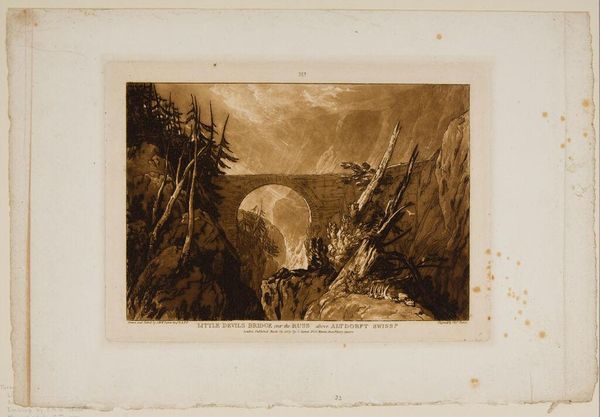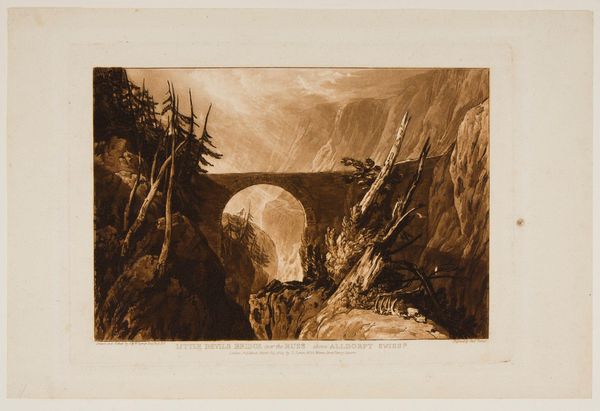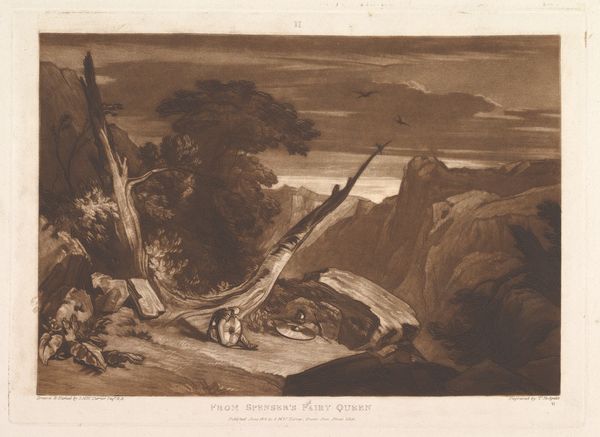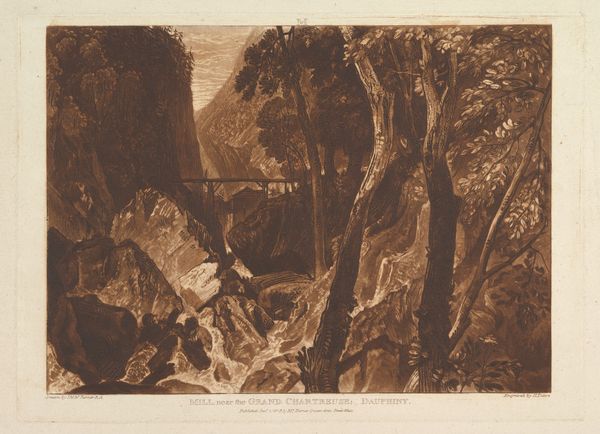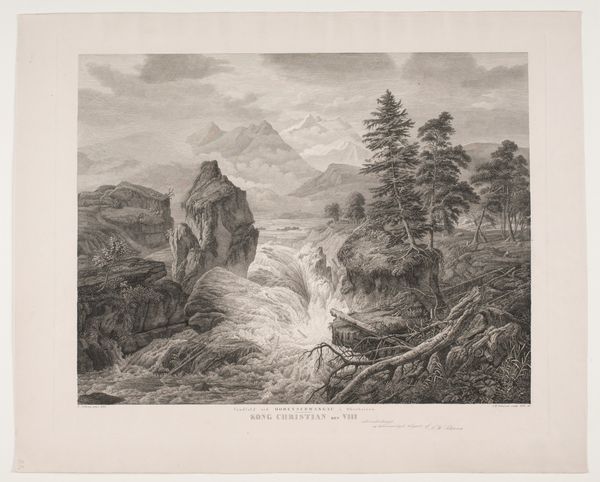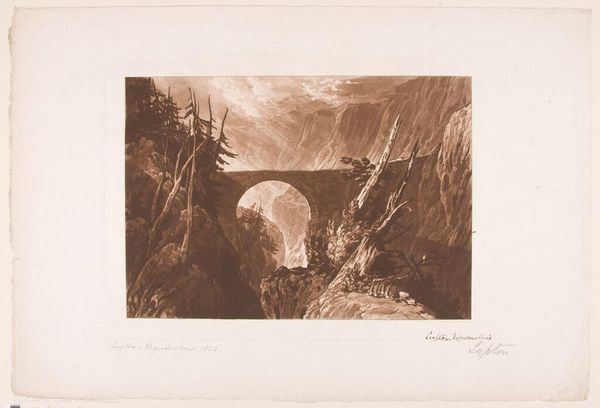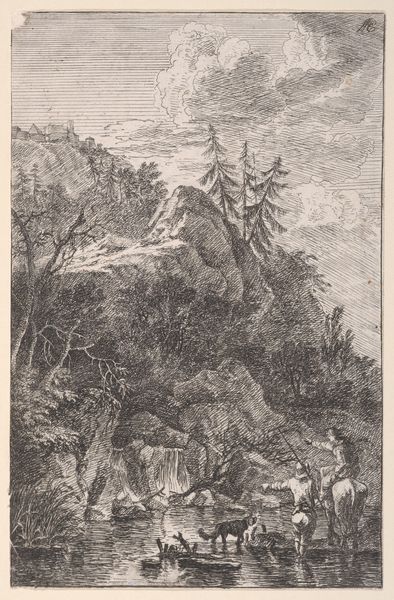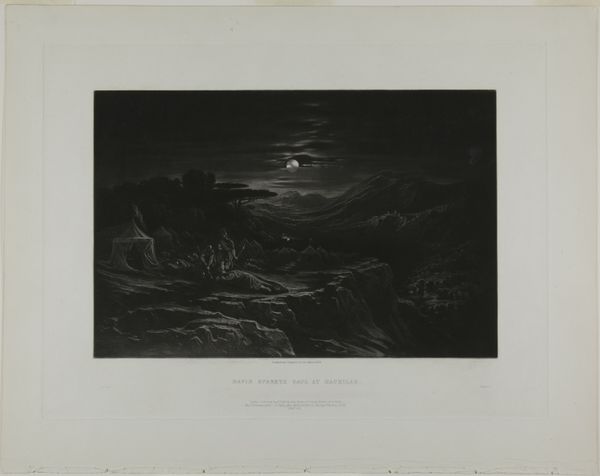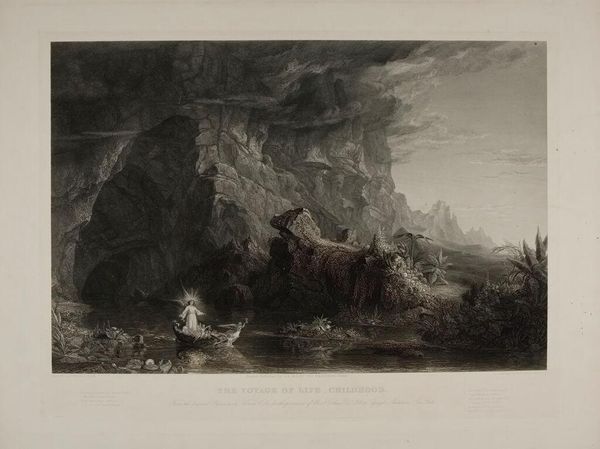
Little Devil's Bridge over the Russ, above Altdorft, Switzerland (Liber Studiorum, part IV, plate 19) 1809
0:00
0:00
drawing, print, etching
#
drawing
#
ink painting
# print
#
etching
#
landscape
#
romanticism
Dimensions: plate: 7 x 10 1/4 in. (17.8 x 26 cm) sheet: 8 1/4 x 11 1/2 in. (21 x 29.2 cm)
Copyright: Public Domain
Editor: So this is J.M.W. Turner’s “Little Devil's Bridge over the Russ, above Altdorft, Switzerland,” from 1809. It's an etching and mezzotint print. The sepia tones and the crumbling rock give it this overwhelming sense of… impermanence. What catches your eye about it? Curator: For me, it’s about understanding the materials and the process of its creation. This is part of his Liber Studiorum, right? Turner wasn’t just making pretty pictures; he was actively engaging with printmaking as a reproductive technology. This allowed him to distribute his ideas about landscape painting far and wide. Editor: That’s interesting. So it's not just about the final image but also about its dissemination and audience? Curator: Exactly. Think about the copper plate, the acid used for etching, the labor involved in printing these images. Each impression is slightly different. How does the act of reproducing these landscapes change our understanding of them, and also commodify them for mass consumption? What is gained, and what is lost? Editor: So the choice of printmaking—a process involving a matrix, ink, and a press—highlights the manufactured aspect of even a romanticized view of nature? Curator: Precisely. And let's not forget the social context. Turner's landscapes were consumed by a burgeoning middle class, eager for representations of the sublime but removed from the actual experience. Consider also, who owned the means of producing this image? How were the earnings from this project distributed amongst the artist, printers and publishers? It really asks us to reconsider who has access to not only nature, but representations of nature in the early 19th Century. Editor: Wow, I hadn’t considered that angle at all. Looking at the material production helps reveal the social and economic structures underpinning this Romantic image. Curator: Exactly. By examining these elements, we see how deeply art is intertwined with labor and power. Editor: That completely changes how I view the artwork. I will look more carefully at the materials of works of art, their manufacturing process and their implications in cultural, historical and societal context. Curator: As will I!
Comments
No comments
Be the first to comment and join the conversation on the ultimate creative platform.
